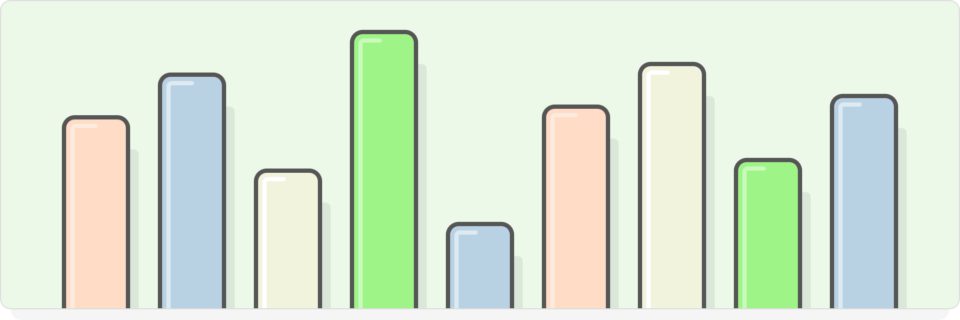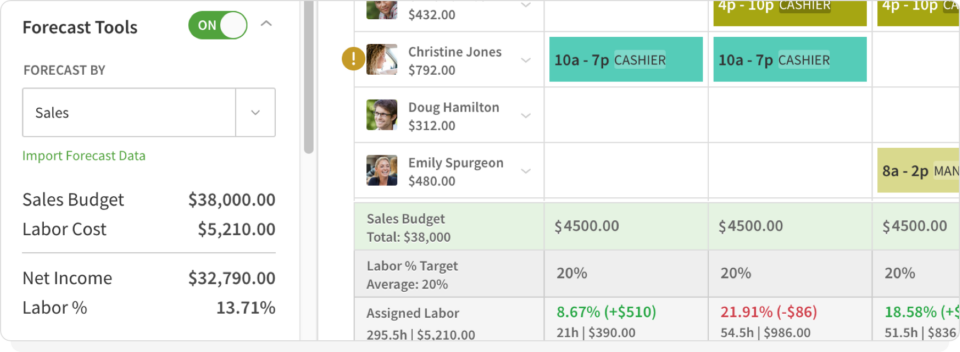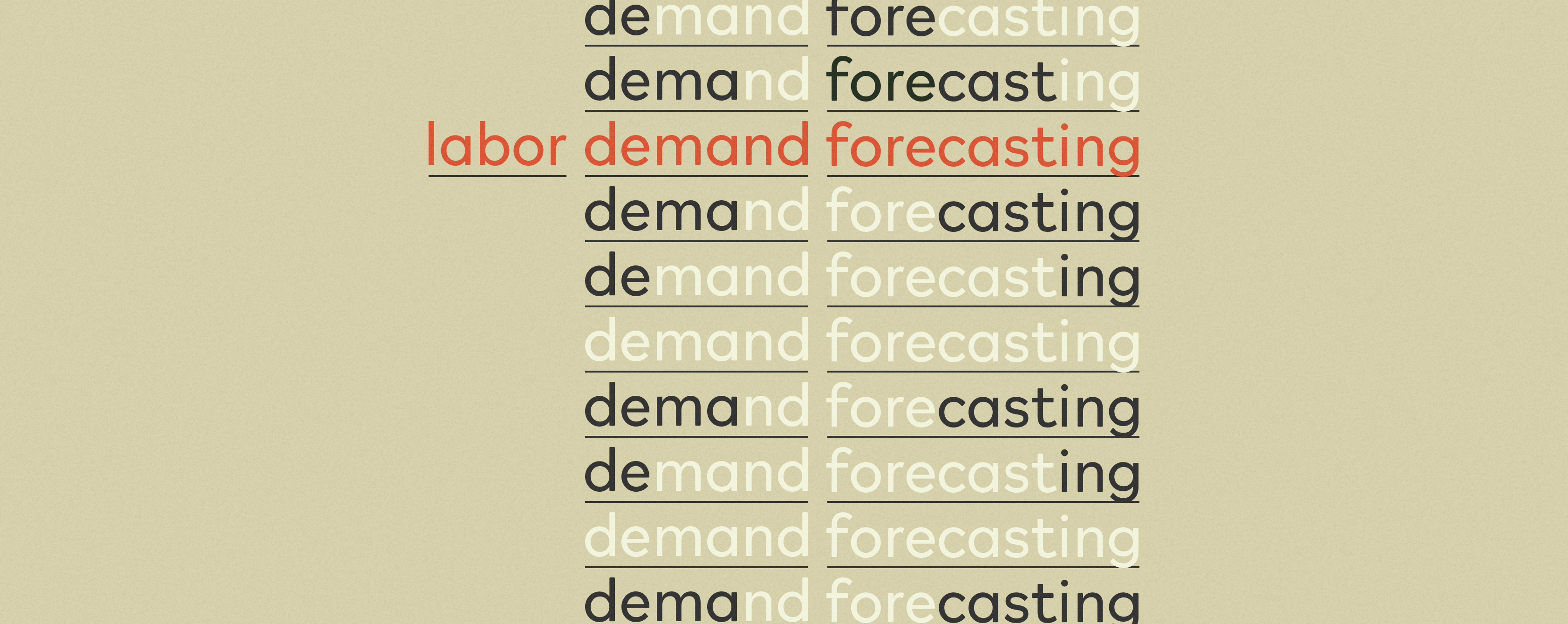Labor Demand Forecasting | What Is It And How To Use It
Try When I Work for free
The pressures of managing a fluctuating workforce might be getting to you. Maybe you’re struggling to balance employee schedules with customer demand. Or perhaps one of your shifts is always understaffed, leading to employee burnout.
No matter the situation you’re experiencing, labor demand forecasting could be the solution you’ve been searching for. By predicting your staffing needs, you can save time and reduce labor costs.
Here are the key things you need to know about labor demand forecasting:
- It helps you predict your workforce needs
- It allows you to reduce labor costs and unnecessary overtime by optimizing staffing levels
- It leads to balanced schedules that reduce burnout and improve employee satisfaction
- The data-driven insights it provides help you align your workforce strategy with business goals and market trends
- It can be simplified with employee scheduling software like When I Work
Table of contents
- What is labor demand forecasting?
- What is the labor demand forecasting equation?
- Who uses labor demand forecasting?
- The benefits of labor demand forecasting
- How software can help you forecast labor needs
- Labor demand forecasting with When I Work
What is labor demand forecasting?
Labor demand forecasting predicts the number of employees your business will need at any given time. It involves analyzing various factors, such as prior sales data, seasonal trends, and market conditions. With that information, you’ll be able to determine the right amount of staff for each period.
Accurate labor demand forecasting will help you avoid expensive mistakes like overstaffing or understaffing. For example, let’s say that you have ten employees and two shifts, one in the morning and another in the afternoon.
Without demand forecasting, you might divide the employees into two groups of five. But a demand analysis reveals that your morning shift is much slower than the afternoon. Using that info, you could restructure your team. You’ll have a 4-person morning shift and a 6-person afternoon shift.
That’s the basic premise of labor demand forecasting. The data you get allows you to assign the ideal number of people to each shift. In turn, you’ll strike a happy medium that avoids understaffing while preventing overstaffing and wasteful labor spending.
What is the labor demand forecasting equation?
The labor demand forecasting equation below calculates the expected number of hours needed to meet customer demand:
Labor demand = forecasted sales * (labor hours per unit / sales per unit)
As an example, let’s say you’re in retail, and you predict $10,000 in sales for a week. You know that each employee can handle about $1,000 in transactions per week, so you’ll need ten employees to meet that demand.
You can adapt the equation to suit the specific needs of your business. If you run a restaurant, for instance, you might consider how many guests or tables you need to serve in a given period.
In any case, after you’ve identified your staffing needs for the week, you will further break down demand into specific days and shifts. Your evening shift may be busier and require more staff than the early or mid-day shift.
Who uses labor demand forecasting?
Any business that experiences fluctuating demand can use forecasting. A few common examples are as follows:
Retail
The retail sector uses labor demand forecasting to match staff levels with customer traffic. These establishments will scale up their workforces during the holiday shopping season or for big sales events. But they may cut back on hours during slow seasons.
If you work in retail, you can use the technique to avoid high labor costs during lulls. At the same time, you’ll ensure that you have enough people on hand to serve customers during spikes in demand.
You don’t want to have a ton of workers there and not need them, of course. But you also don’t want customers to suffer through long lines. Demand forecasting helps you strike the perfect balance.
Food service
Restaurants and other food service establishments experience huge variations in demand. They must adapt their staffing to match. Otherwise, they’ll have a whole lot of unhappy customers on their hands.
However, food service staffing can be tricky, given all the variables at play. Your business might experience spikes on specific nights of the week as well as upticks during seasonal fluctuations.
Labor demand forecasting helps you adapt to all of these changes. You can restructure your schedule to align with current needs, which is vital for keeping customer wait times down and providing adequate service.
It’ll also help you create fair schedules. You don’t want the same employees working the busy shift every week. Overloading them with the weekly dinner rush can lead to burnout. Other employees may get frustrated, too, especially if they are missing out on tips. But if you understand customer behavior, you can spread employees around in a fair way. Everyone will have a chance to work busier shifts and slower days.
Healthcare
Healthcare organizations use labor demand forecasting to ensure they maintain a high standard of patient care. Hospitals and clinics need to predict staffing needs based on patient volume. They must also account for seasonal illnesses, tourists, and other variables.
By having the right number of professionals available, facilities can provide timely and effective care without overburdening their staff.
The benefits of labor demand forecasting
A few of the most notable benefits of labor demand forecasting help you to:
Avoid employee burnout
Burnout is running rampant among American workers, with roughly 52% of all workers claiming to feel its effects. And though there are lots of potential causes, being overworked is one of the primary contributing factors to employee burnout.
By identifying demand trends, you can build a balanced schedule. You want each person to have enough work to do to justify the labor costs. And at the same time, you never want them to feel like they are drowning.
Labor demand forecasting is all about striking that ideal balance. It helps you understand how many people to put on each shift without needing to guess. You’ll know the number of workers that are necessary to adequately serve customers without making any of your staff feel overwhelmed.
Reduce labor costs
Demand forecasting also plays a key role in labor budgeting. Overstaffing leads to unnecessary payroll expenses. And understaffing can result in costly overtime. In either case, your bank account will suffer.
Forecasting techniques help you optimize your staffing levels to match actual demand. For instance, let’s say that your business experiences a dip in demand from Tuesday to Thursday, while Friday and Saturday tend to be much busier. Under your current scheduling strategy, the mid-week shifts have two extra workers, and the Friday and Saturday crews are always shorthanded.
Forecasting offers the solution: You can reallocate those two extra workers to your weekend crew. That simple change will cut wasteful labor costs out of your budget and help minimize the need for overtime on Fridays and Saturdays. You’ll go on to save yourself hundreds or even thousands of dollars each month.
Amplify strategic decision-making
If you’re mindful of your labor needs, you’ll be able to make informed decisions when planning shifts. You can distribute your workforce in a way that will offer maximum benefit to your business and customers. Forecasting also promotes fairness in scheduling and ensures that a select handful of employees aren’t always given the best shifts.
Forecasting also helps with big-picture planning. For example, let’s say you run a retail establishment. And every holiday season, you experience a two-month-long spike in demand. Knowing that the spike is coming means you can prepare. You can either hire seasonal workers or set aside money in your payroll budget for overtime costs.
Lastly, labor demand forecasting plays a key role in staying prepared for future challenges and opportunities. It allows you to allocate resources more effectively. You’ll also be able to improve operational efficiency and drive profitability. Labor costs represent your biggest expense. Make sure you are managing them wisely through forecasting.
How software can help you forecast labor needs

Now you know why you should forecast labor demand. That means your next step involves figuring out how to create accurate forecasts. And that’s where When I Work can help. Our employee scheduling platform offers a range of features designed to simplify the forecasting process. You can use historical data to understand how many employees you need to meet customer demand.
One of the key advantages of When I Work is that it is an all-in-one platform. It includes payrolling capabilities and a built-in time clock. As such, you’ll be able to unify schedules, time logs, and payroll into a single application. And that will help you create accurate labor forecasts that ensure you have enough team members ready to serve your customers.
Labor demand forecasting with When I Work

When I Work offers a user-friendly interface and powerful forecasting tools. It empowers you to make data-driven decisions that optimize your workforce and reduce costs. Sign up for a free 14-day trial of When I Work today and take the guesswork out of labor demand planning.






